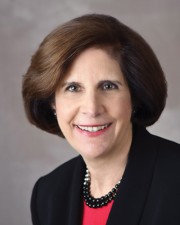Court expands applicability of Article 97 in parks in MA - by Susan Bernstein

In October 2017, the Massachusetts Supreme Judicial Court (the “SJC”) issued its decision in Smith v. City of Westfield, involving when a proposed change in the use of public park land could be governed by the Massachusetts State Constitution’s Article 97 (the public’s right to clean air and water, quality environment etc.). Article 97 protection had previously been based on whether the land in question had been taken by eminent domain and restricted by a recorded document that limited the use of the property to conservation or recreational purposes; and been approved by a two-thirds vote of the Legislature. The SJC concluded that there are situations in which municipal parkland may be protected by Article 97, even though there has not been a recorded restriction, as long as the land has been “dedicated” as a public park.
In this case, a public park, created in 1939, which benefited from federal conservation, recreation and open space funds, a comprehensive statewide outdoor recreation plan, and City Council approval, was proposed to be re-purposed as a public school. Local taxpayers brought suit to halt the change of use, claiming that the land could only be protected by Article 97 if it had been taken or acquired for conservation or another purpose, as set forth in Article 97, or where the land is specifically designated for Article 97 purposes by deed or other recorded instrument. Since none of these conditions appeared to exist, the judges in the lower court versions of the case found that Article 97 did not apply to this parcel.
The SJC decision expanded the criteria considered in determining whether Article 97 protection applies, notwithstanding prior decisions that concluded otherwise. Other cases considered whether the City of Boston’s urban renewal plan provided Article 97 protection (Mahajan v. Department of Environmental Protection); whether a town had followed the proper procedure to transform its general corporate property into conservation land protected by Article 97 (Selectmen of Hanson v. Lindsay); and whether the Public Garden and Boston Common, which are owned in fee simple by the City of Boston, were public parks (Lowell v. Boston). The first and the second cases were found not to have Article 97 protection while the last one did.
The determinative factor in the SJC’s ruling in Westfield focused on whether the land was “designated” or “dedicated” for an Article 97 purpose and therefore protected by it.
In Westfield, the SJC stated that two related common law theories, dedication of land for public use and prior public purpose must be included in the discussion. The Court said that the use must be proclaimed orally, by written statements or by declarations made directly to the public or by the owner’s acts from which such an intention can be inferred. “A municipality may dedicate land owned by it to a particular public purpose provided there is nothing in the terms and conditions by which it was acquired or the purposes for which it is held preventing it from doing so, . . .and upon completion of the dedication it becomes irrevocable.” The title may be in the name of the municipality but the “beneficial use” is in the public (as in the Lowell case). The SJC also said that “[t]he rule that public lands devoted to one public use cannot be diverted to another inconsistent public use without plain and explicit legislation authorizing the diversion is now firmly established in our law.”
The SJC concluded that the City of Westfield’s park land was “dedicated” as a public park and that by the City’s acceptance of federal funds and the state’s Open Space Plan (the “Plan”) the City was prevented from re-purposing the playground without legislative action. Further, the SJC noted that documentation issued by the state’s Plan, referenced that the development of the land became protected by Article 97. This decision has expanded the factors that can be considered, depending upon the specific facts, for ascertaining Article 97 protection.
Susan Bernstein is an attorney at law, Needham, Mass.




.png)
